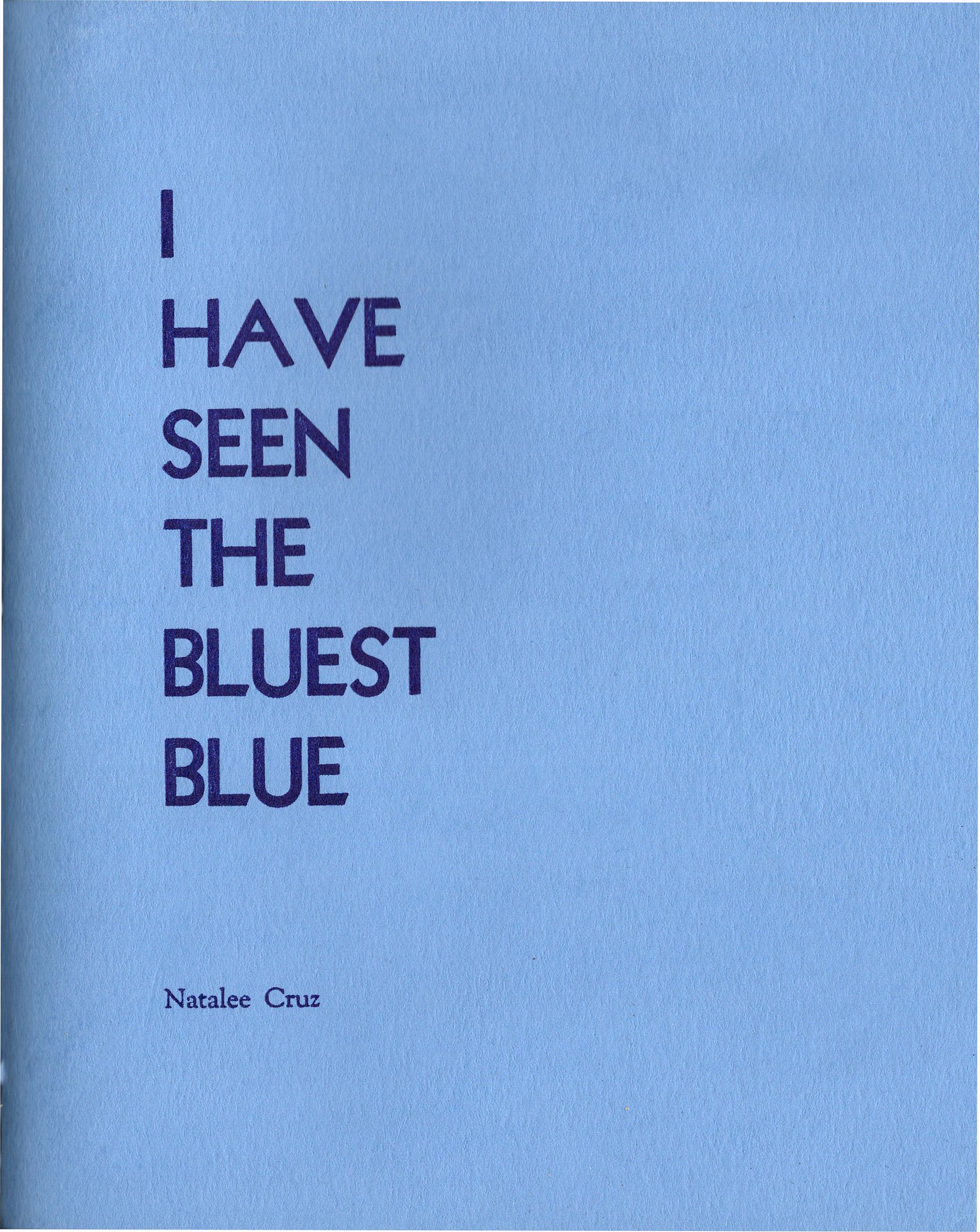REVIEW: “I Have Seen the Bluest Blue” by Natalee Cruz
Cover image courtesy the poet and Ugly Duckling Presse.
REVIEW
I Have Seen the Bluest Blue
By Natalee Cruz
Chapbook, $14
Ugly Duckling Presse
By Michael Workman
For me, this heart-wrenching debut by Natalee Cruz is among the best in poetry debuts this year. I could give no better analysis of the poetics and structure than Diego Báez does in his review over at Harriet Books, with its keen observation of the mood-shift in the poem‘s description of colors. Also as noted in his review, is how the book splits the narrative: it starts with the language of her father’s employer in the first section, who has written a letter in support of the return of the poet’s mother-in-law, who is facing deportation. Cruz riffs on the language of the letter in refrain throughout, invoking turns of phrase, fractured texts and shifting resonant frequencies anchored to the original letter in numbered sections all under the header of that letter’s opening: “To Whom It May Concern.”
It’s brooding, yearning language is tangible. We are to whom it is concerned, this wrenching voice seems to say, of course, and as the fragments in the text stagger across the page, the blue seeps in all around, the constant refrain of the institutional void filling the spaces around the page until the next section, where the mother in law is imagined presenting her case before a court she was never given the chance to face.
Its poetic mechanisms on one level reminds me of Mexican poet and philosopher Ulises Carrión’s SONNET(S), another Ugly Duckling Presse title, wherein he repeats and distorts the 1871 sonnet “Heart’s Compass” by Dante Gabriel Rossetti, breaking down the love poem into 44 reimagined versions as an intentional sort of Conceptualist game (with its embedded play around the idea of plagiarism).
Ms. Cruz also works at that level of language structural enactment, but inscribed into this language is also an elemental force that doesn’t appear in Carrión, as in “IX: To Whom It May Concern,” when she writes:
Since my wife was deemed a criminal I have seen what it means to be evil.
And later:
To the lawyer who tricked my wife:
life as a parasite is lonely
Once you’ve consumed your host.
It’s a section that seems to echo in “XV: My Voice is Returned” when at her imaginary trial, the mother in law says “this country, the United States, is of little consequence,” and goes on to describe, against a backdrop of the “cold shivers of February,” Monarch butterflies arriving in Mexico:
Up and over the walls, the furious wings, a burnt orange tide.
As described in the backmatter, the book was begun in a workshop with Asiya Wadud and Rebekah Smith, the poem began as “a way of processing a piece of text that my father sent to me in January of 2020 that was nearly swept up and lost in the stress of the pandemic.” Echoes of unnecessary loss, of the work of that processing, seem to serve as rivets in this lovingly handbound chapbook was stitched at the Presse’s offices by volunteers, with covers and flyleaves printed at the Presse, and beautiful printing done by McNaughton and Gunn. Issued in a limited run of 500, Ms. Cruz’s I Have Seen the Bluest Blue is, without a doubt, one of this year’s most auspicious debuts.
Like what you’re reading? Consider donating a few dollars to our writer’s fund and help us keep publishing every Monday.


